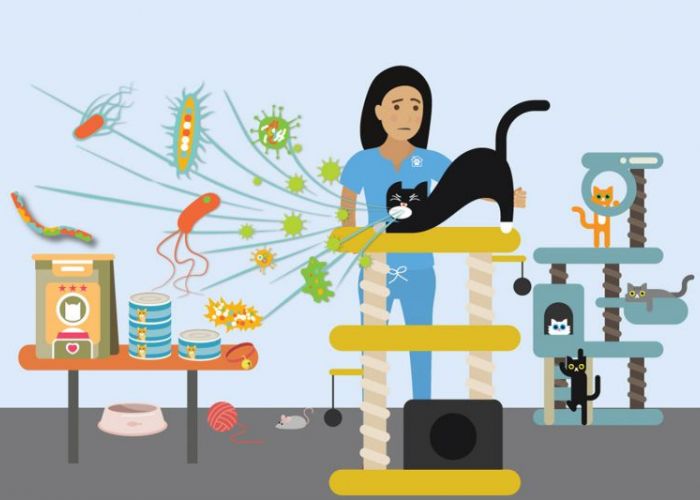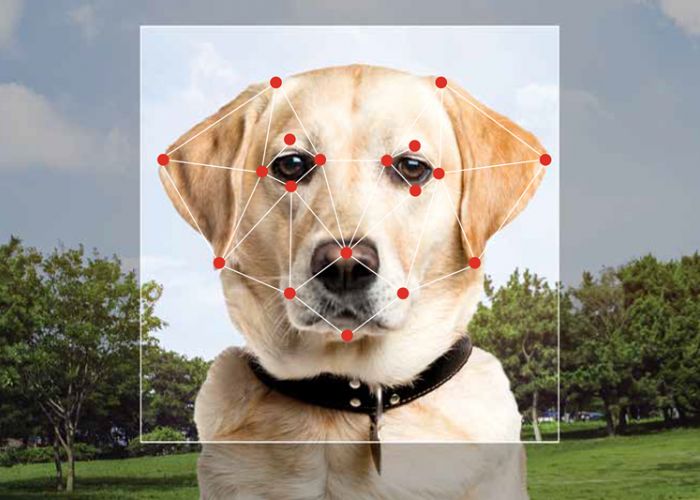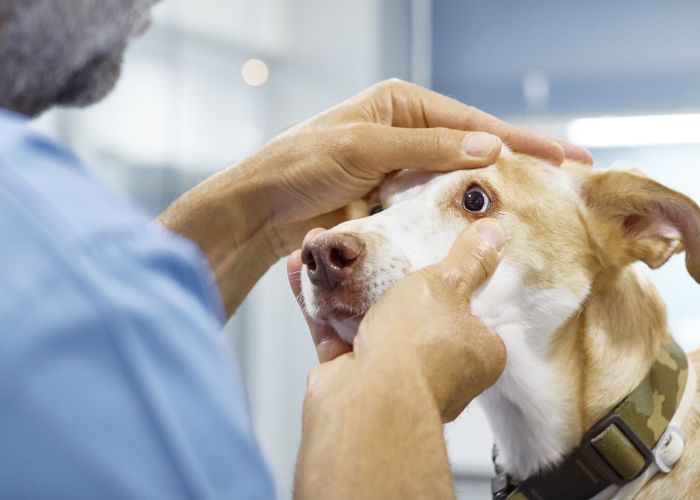Career spotlight: Humane educators
In a career that is also a calling, humane educators nurture the roots of animal advocacy
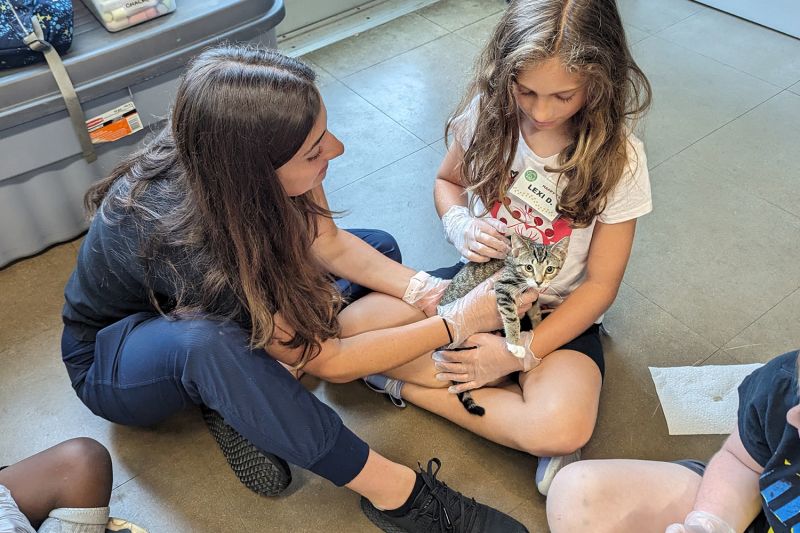
Ask humane educators Katie Campbell and Sandi Comunale to talk about their jobs, and they are moved to tears. Sitting side by side on a video call, with one of their animal ambassadors, Clover, a captive-born striped skunk, turning an exercise wheel in the background, the two humane and wildlife education specialists explain why they love their work at Humane Animal Rescue of Pittsburgh.
“My favorite part of my job is knowing what I’m doing is going to inspire people to make a difference in the natural world,” says Campbell, her eyes tearing up. “It’s such a beautiful thing to get to do. We really try to instill the idea that you’re not too small to make a difference.”
“I love to see the spark,” says Comunale, also starting to cry. “When people care about something, they protect it. We’re kind of the first line of defense in helping preserve the planet.”
Humane educators such as Campbell and Comunale say they pursue their careers as a calling. Their work can take them to daycares, elementary schools and libraries. They may lead activities for Scout troops and run after-school sessions, teen programs and summer camps. They may give shelter tours and organize birthday parties. All the while, they’re engaged in something more profound: creating the next generation of animal advocates and environmental stewards and planting the seeds of a more compassionate society.
“At the end of the day, it’s all for the animals,” says Rhiannon Annin, who worked as a humane education coordinator at the Potter League for Animals in Middletown, Rhode Island, from 2022 into 2023. Her goal was to teach kids so “they can be better pet owners and activists.”
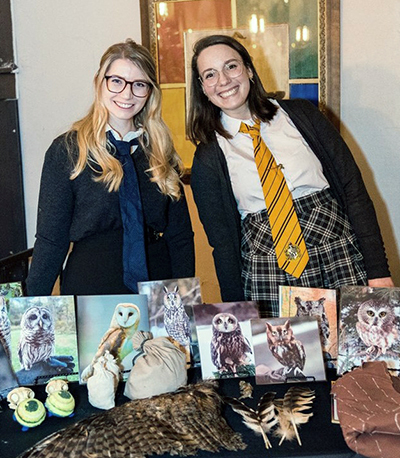
Annin taught the importance of adopting from shelters rather than buying from pet stores. She told kids they should keep their family cat indoors and if they see a community cat outside, they should check for an ear-tip to see if the animal has been spayed or neutered. She told fourth and fifth graders that sometimes shelters have to euthanize animals if there’s no other way to relieve their suffering.
Her lessons featured a rotating cast of shelter animals, including a deaf dog named Ripley, and lots of questions to get kids to think, like “What animals do you like to pet? What animals do you eat?” The kids gathered round her and all had something to say.
“Do you think carrots are good for bunnies?” she might ask, and then add, “A carrot for a bunny is like a bowl of ice cream. It’s the green part that’s [healthy].”
Her favorite outcomes: adoptions, such as the boy with a broken leg who was feeling sad because he could no longer play sports and whose family adopted a kitten the boy bonded with during a classroom visit. “Moments like that are pretty fabulous.”
Teaching compassion
Humane education is an emerging field, especially at the local level. De Daltorio, chief education officer at the Charleston Animal Society in South Carolina, which has two other humane educators, says communities are hungry for the lessons their educators provide. “We could have five of us and not meet the demand. We always say compassion is a skill. It can be taught.”
Many who enter the field have experience teaching or working with young people. Daltorio is a former art teacher who switched careers after moving to Charleston and volunteering at CAS. Campbell, a zoology major, worked as a counselor at a YMCA summer nature camp. Comunale, who studied biology and environmental science, interned at the Carnegie Science Center, where she led teenagers building trails on the grounds at the Carnegie Museum of Natural History.
It helps to be outgoing and something of a performer—and to work silliness into what are sometimes sad topics, says Annin, who once taught theater and dramatic arts to kids. The job also requires listening and empathy.
A background in animal welfare is also useful. Someone hired at a shelter, rescue or wildlife clinic to engage the public—say, coordinating volunteers or community outreach efforts—might create a humane education position for themselves by developing a curriculum and engaging local youngsters. For help developing programs and expanding their skills, they can turn to the 400-member Association of Professional Humane Educators, which offers training, conferences, lesson plans, job listings and scholarships.
By offering humane education programs, shelters are investing in the future while also reaping more immediate benefits—such as introducing themselves to the community and recruiting volunteers and donors.
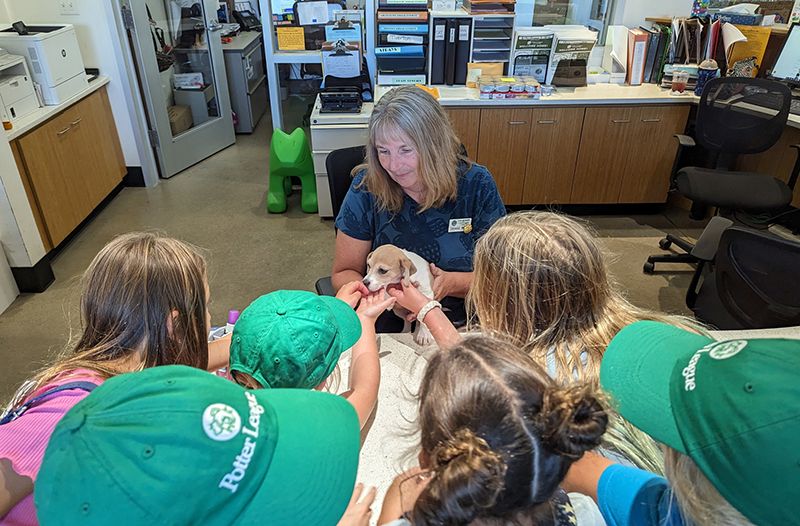
Comunale uses her job to break people’s stereotypes of what the role of an animal shelter is: In the case of Humane Animal Rescue of Pittsburgh, it stretches beyond companion animals and includes rehabilitating thousands of wild animals. A big part of Campbell’s job is building community partnerships—with museums, parks and, recently, even with a local group of sword fighters called Broken Plow Martial Arts. Those partnerships allow her and Comunale to carry their lessons to new audiences and locations.
Daltorio says humane education programs can give children who might never have had positive contacts with animals revelatory experiences: that dogs can be kept inside; that cats are not “evil.” They allow kids to get in touch with their own feelings, like the girl who after meeting fearful dogs at the Charleston shelter opened up about getting bullied.
Humane educators say they are raising a generation that’s going to treat animals differently. Those lessons can also apply to humans.
To teach about consent and empathy, Annin would sometimes introduce a shy shelter dog or cat who needed some space. She’d tell the kids, “We don’t know what her story is, so we have to be extra respectful.” Despite their excitement, the children would refrain from touching the animal.
Humane education can be used to address wider social problems. The pandemic was particularly stressful for teachers and students, who reported increased depression and anxiety. After classroom visits resumed, Daltorio went to a local elementary school with Louie, a three-legged dog, and Doodlebug, a puppy mill rescue.
She delivered the lesson through a picture book—Love Me Gently—about a boy and his adopted puppy. Students learned friendship, teamwork, empathy and compassion. The visit also produced academic success: Several students started reading on their own.


